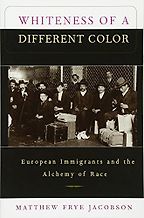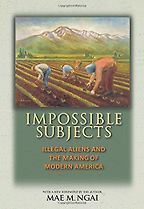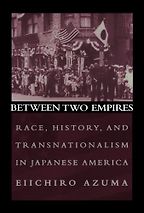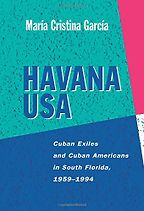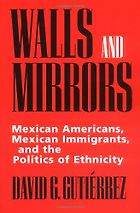That America is “a nation of immigrants” was a point of patriotic pride in the latter part of the 20th century. Before becoming president, John F Kennedy introduced the phrase to common parlance in a 1958 book bearing that title. But the current president’s perspective is so different that his administration just struck the phrase from the United States Citizenship and Immigration Services’ mission statement. You’ve named five books which focus on the relationship between immigrants and the United States. Before we wade in, please preliminarily weigh in on whether the US is “a nation of immigrants.”
Immigrants have been fundamental to the United States. Their contributions should not be erased. Yet the term “nation of immigrants” expunges the histories of other groups from our national narrative. Not only does it ignore Native Americans and overshadows the history of settler colonialism but it also overlooks that not everyone who came to the United States did so willingly or as an immigrant. Slaves were forcibly transported to the United States; Mexican and Caribbean migrants were often brought as guest workers and allowed to labor here temporarily but were not considered immigrants who could remain in the country.
Get the weekly Five Books newsletter
It should be possible to talk about the importance of immigration to US history and the many contributions that immigrants made without erasing the histories of Native Americans, slaves, and migrant workers who helped build this country.
Undocumented Lives, your brilliant new book, details how 20th-century immigrants to America become caught between nations. I’d love to discuss it more at the end of our conversation but can you tell us about your research methods and approach before we begin?
In this book I was interested in capturing changes in polices and legislation in Mexico and the United States with regard to migration as well as the lives of migrants and their communities. Because traditional repositories still do not contain much pertaining to the experiences of undocumented workers, documenting their stories required creating and discovering new archives. I conducted over 250 oral history interviews with migrants and their communities on both sides of the border. I also examined the love letters, poems, and songs they wrote, the newspapers they published, and their organizations’ literature. Much of my research took place in private individuals’ garages and storerooms, as well as in the basement of the migrant-led welfare institution, La Casa del Mexicano. I explored the positions and policies of government officials by studying Congressional Hearings, conducting research at the US and Mexican national archives, and using the Freedom of Information Act to request files on US immigration policies and practices.
European Immigration to the United States is the subject of the book you recommend by Yale historian Matthew Jacobson. Tell us about Whiteness of a Different Color.
Whiteness of a Different Color explores how European immigrants who were considered to be of different races came to be understood as a “single, consanguine race of Caucasians.” Jacobson shows how the large influx of European immigrants that began in the 1840s led to internal divisions in the concept of ‘white people.’ New hierarchies emerged to classify distinct white races, which included Celts, Slavs, Hebrews, and Anglo-Saxons. In 1924, however, whiteness began to be reconstituted again with the passage of the Johnson–Reed Act. The new law dramatically curtailed immigration, which, in turn, led all ‘white people’ to be considered ‘Caucasian.’ This drift was further propelled by the Great Migration. As a growing number of black people fled the south and headed west and north, white people came to believe that they ought to focus on the black/white binary.
The idea that people of many nations meld together to become Americans—in just a generation—is almost as old as America itself. The Melting Pot, a 1908 play that celebrated assimilation, became the metaphor for America as a nation of amalgamated immigrants. Does Jacobson’s work extinguish this metaphor?
Jacobson’s work shows how despite the proliferation of anxieties about the Anglo-Saxon race being decimated because of the influx of inferior white races, in the years between the 1870s and the 1920s, US courts minimized the differences between “distinct white races.” Jacobson eloquently holds “whereas for some the phrase ‘white persons’ became the instrument of exclusion, for others it became a powerful crucible whose exclusions based upon distinctions of color blurred other potentially divisive physical distinctions, This, indeed, is the melting pot.”
“Illegal Aliens and the Making of Modern America” is the subtitle of Columbia University historian Mae Ngai’s Impossible Subjects. Please tell us about it.
Impossible Subjects explores the origins of the concept of the ‘illegal alien’ in the United States. Ngai begins her book by exploring the passage of the Johnson-Reed Act in 1924. While most historians have focused on how this law discriminated against Eastern and Southern Europeans, Ngai focuses on its effects on immigration from Asia and Mexico. The law, she argues, furthered the already existing process of Asian exclusion by barring East and South Asians from immigrating. Although the Act placed no limits on immigration from the Western Hemisphere, the US government enhanced immigration enforcement by also introducing the Border Patrol that same year. Because the Border Patrol was meant to police the entrance of migrants, its creation gave significance to the act of crossing the border illegally. As such, Ngai argues, Asians and Mexicans became impossible subjects “whose inclusion in the nation was at once a social reality and a legal impossibility.” Because Asian Americans and Mexican Americans were identified and treated as aliens despite their citizenship, they too experienced lives as impossible subjects.
Ngai focuses on immigration during the middle decades of the 20th century, when the American civil rights movement was coalescing. What is the relationship between the American civil rights movement and the American immigration system, if any?
The book concludes with the passage of the Hart-Celler Act. Although the Act has been long heralded as one of the liberal victories of the 1960s because it helped to repeal the system of national origins quotas, Ngai sheds light on another aspect of it: the law introduced for the first time numerical caps on the Western Hemisphere without taking into consideration Mexico’s longstanding migration to the United States. Thereafter, Latin Americans would find it much harder to migrate legally to the United States.
You’ve listed a book about the Japanese-American immigration experience. Please tell me about Between Two Empires and why it’s made your list.
Eiichiro Azuma’s book explores how before the Second World War, Japanese in the United States lived in a racialized in-between space, pulled by forces from both the United States and the empire of Japan. While most histories about Japanese migrants and Japanese Americans focus on Japanese internment, Between Two Empires explores the complicated loyalties, racial understandings, and national alliances that Japanese in the United States experienced. I consider it one of the most important histories of immigration because of Azuma’s chosen framework. Rather than focusing only on the pressures and experiences Japanese people faced in the United States, he also examines how they felt about and related to their homeland.
Eiichiro Azuma’s work seems to belong to an emerging field of academics – transnational history. What should we know about this field and its relationship to immigration?
Azuma’s work was one of the first to extend US migration history beyond the confines of the US nation-state. By being fluent in both Japanese and English and using archives located in both countries, Azuma is able to provide a compelling analysis of the lives of Japanese in the United States and to show how they were caught between two empires. Through this book Azuma modeled how to do this type of cross-border history that is associated with the transnational turn. Still, Azuma himself describes his work as “inter-National” rather than transnational so as not to lead readers to assume that Japanese immigrants were “free-floating cosmopolitans” who could “enjoy a postmodern condition above and beyond the hegemonic structures of state control.” The term “inter-National” Azuma argues, shows how interstitial structures affected the lives of immigrants.
David Gutiérrez traces one hundred years of the cross-pollination of Mexico and the United States. What will readers take away from reading it and why do you recommend it?
Walls and Mirrors is an exemplary book not only because it provides readers with a longue-durée of the history of Mexican migration, which most such studies do not provide, but also because of the author’s brilliant insights about the complex relationship between Mexican migrants and Mexican Americans. While many Americans see these groups as interchangeable, Gutiérrez demonstrates the complex and often hostile relationship that existed between them. Mexican Americans’ attitudes towards Mexican migrants, he shows, “often reveal more” about Mexican Americans’ “own sense of ethnic and political identity than about their feelings concerning the immigration debate.”
What is the metaphorical freight of its title,Walls and Mirrors?
Walls and mirrors refers to the “differences that divided and the commonalities that bound” Mexican Americans with Mexican immigrants. As I noted earlier, Mexican Americans often tried to distinguish themselves form Mexican migrants—they often tried to build walls between the two communities—but they sometimes saw mirrors.
What does Havana USA add to this conversation?
María Cristina García’s Havana USA shows how, as a result of Cuban migration, South Florida came to constitute a borderland area. García focuses on the first three great waves of Cuban migration to the United States following the Cuban Revolution. In doing so, she exposes the vast diversity in the Cuban community residing in the United States—a community that is often portrayed as monolithic. While Walls and Mirrors reveals how the Mexican and Mexican American communities were often divided, Havana USA demonstrates how the Cuban community faced internal divisions among exiles themselves.
What can we learn about the experience of Cuban exiles in the United States?
Havana USA demonstrates how Cubans were able to assimilate structurally into the United States while simultaneously forging a distinctive cultural identity. García demonstrates that unlike other immigrant groups, Cuban exiles received vast support from the federal government and nongovernmental organizations. This support allowed them to succeed economically and politically while creating a vibrant Cuban enclave in south Florida. In other words, the Cuban experience could provide a model of how federal and other support could help other migrants to incorporate into the nation and ensure their success.
What does your work reveal about how immigrants become caught between two nations with competing interests and how they can get out of the pincer of transnational politics?
Undocumented Lives: The Untold Story of Mexican Migration examines how unauthorized migration from Mexico to the United States became entrenched in the period between 1965 and 1986. At the outset, I argue, Mexican officials discouraged emigration, but by the 1970s, those same officials were encouraging the departures of working-class men as a solution to high unemployment and population growth. Simultaneously, the US government attempted to address these same problems by further fortifying the border and conducting more raids in Latina/o communities. Men from migrant communities also saw their permanent residence denied at the local level. When they resided in their hometowns in Mexico, their families and friends pressured them to head north to make money. Conversely, when they lived in their new cities and towns in the United States, their communities insisted that they return home.
“Migrants sought to affirm their own cartographies of belonging”
Migrants described their diminished capacity to belong in local and national spaces by describing themselves as being “neither from here nor from there” – “Ni de aquí ni de allá.” In this context, migrants sought to affirm their own cartographies of belonging. They unwittingly resisted the idea that they were superfluous in Mexico by becoming indispensable economic agents in their hometowns through the money they sent from abroad; they countered their illegality north of the border by establishing that undocumented migrants deserved constitutional rights; and they diminished the pressures enacted by their communities by reconfiguring the very meanings of community life. These actions provided them with partial inclusion in the multiple locales they lived, but only as migrants who lived, at least some of their time, in the United States. For their part, elderly Mexican men, along with women and queer men, commonly responded to dominant gender and sexual ideologies by remaining in Mexico and depending on foreign remittances to survive.
Five Books interviews are expensive to produce. If you're enjoying this interview, please support us by donating a small amount.
In 1986, the US Congress passed the Immigration Reform and Control Act, making it more difficult to cross borders. By then, however, undocumented migration had already become a self-perpetuating phenomenon. In light of the new hardships of migration, many Mexican families decided to settle together in the United States and dared not return to Mexico for fear that they would not be able to get back into the United States. Rather than feeling “pushed” from all the spaces in which they resided, they now felt entrapped in the United States, which they referred to as the “Jaula de Oro,” or the Golden Cage.
Five Books aims to keep its book recommendations and interviews up to date. If you are the interviewee and would like to update your choice of books (or even just what you say about them) please email us at [email protected]


